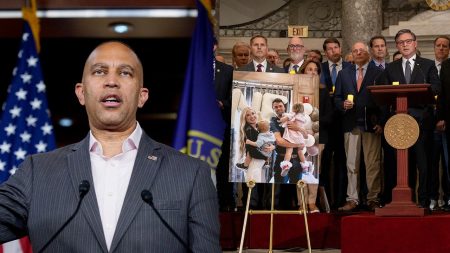In a recent Supreme Court hearing regarding a nationwide ban on mifepristone, the primary drug used for medication abortions, most justices appeared skeptical of the idea. The case focused on lower-court rulings that rolled back FDA decisions easing access to the drug, with questions raised about the standing of the doctors who brought the lawsuit. Both conservative and liberal justices questioned the need for limiting access to mifepristone, suggesting that doctors should be able to exercise religious and conscientious objections individually. A decision is expected by July.
During the hearing, Chief Justice John Roberts and Justice Neil Gorsuch challenged the attorney representing the challengers of the abortion pill, questioning the nationwide impact of the lawsuit. The Biden administration argued that the relief granted by the court should have been limited to the parties involved rather than affecting the entire country. The issue of standing for the doctors challenging the drug approval was also discussed, with concerns raised about the broad impact of the lawsuit.
Several justices delved into detailed questions about medical procedures and practices related to mifepristone and medication abortion. Justice Ketanji Brown Jackson inquired about emergency procedures following medication abortion and the complicity of doctors in the process. Specific medical questions were also raised about procedures like dilation and curettage after an incomplete abortion, highlighting the complexities of reproductive care and medication abortion safety protocols.
Justices Samuel Alito and Clarence Thomas questioned whether anyone can challenge FDA drug approvals and raised concerns about the agency’s decision-making process. The discussion also touched on the Comstock Act, a law banning the mailing of drugs used for abortion, with some arguing that the FDA’s regulations did not consider this law. However, defenders of the FDA contended that the agency’s focus is on ensuring legal access to medication rather than enforcing criminal laws.
The quick escalation of the mifepristone challenge to the Supreme Court was attributed to judge shopping and the involvement of lower-court rulings affecting access to the drug. The case originated in a Texas district court and passed through the appeals process before reaching the high court. Changes to judicial processes have been implemented to limit judge shopping, but it remains a factor in social and political lawsuits that impact national policies and regulations.
Overall, the Supreme Court hearing on mifepristone raised important questions about access to medication abortion, the standing of challengers, and the role of the FDA in drug approvals. Justices from both sides probed the legal and medical aspects of the case, indicating a complex and multifaceted issue that could have far-reaching implications for reproductive healthcare in the US. The decision, expected by July, will likely shape future policies and regulations surrounding medication abortion.













